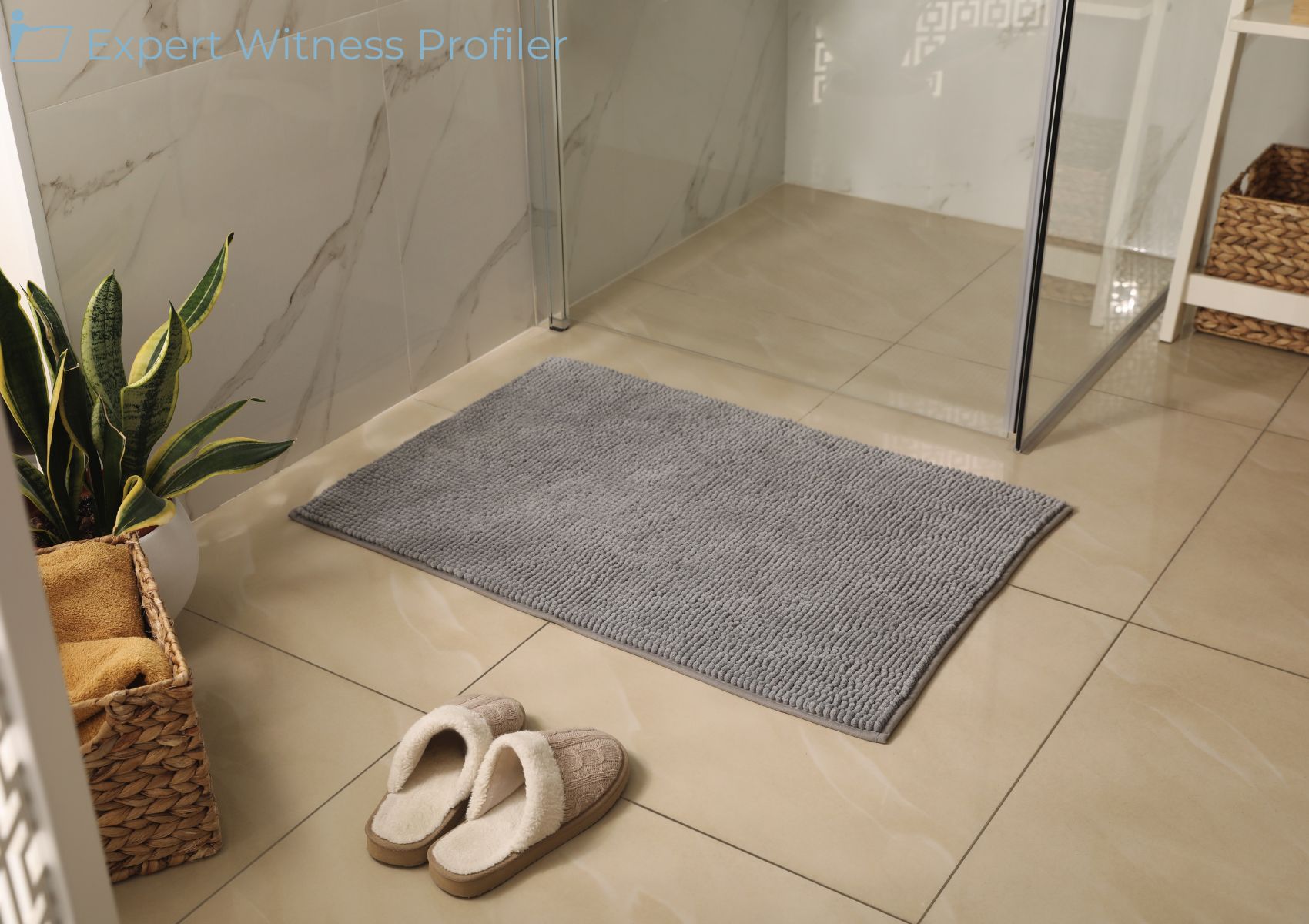Materials Science and Orthopedic Surgery Experts analyze Hip Implant Failure
Posted on July 5, 2024 by Expert Witness Profiler
Pamela Ahmed has a history of back problems dating back to a traffic accident in approximately 1988. By 2020, Ahmed had a litany of “bad orthopedic issues,” leading her doctor to deem her an “orthopedic disaster.”
She began to experience significant hip arthritis, and her doctor diagnosed her with end-stage osteoarthritis. Ahmed underwent a right total hip arthroplasty on November 4, 2020, during which her doctor implanted her with a Pinnacle Altrx polyethylene liner, Pinnacle cup, and Biolox ceramic femoral head.
On February 25, 2021, Ahmed reported to her doctor that her hip was popping and that she had fallen. Ahmed underwent a revision hip arthroplasty in March 2021, and received a new femoral head and acetabular liner. On March 19, 2021, Ahmed underwent an additional surgery as a result of an infection. In June and August 2021, Ahmed experienced two incidences of hip dislocation.
Ahmed filed this lawsuit alleging that she was injured when her polyethylene hip implant (the Pinnacle Altrx) became dislocated. She retained two expert witnesses Richard Edwards and Dr. Kenneth Sands.
Defendants have since moved to exclude all opinions of Plaintiff’s
expert, Edwards, and Plaintiff’s rebuttal expert, Sands.

Materials Science Expert Witness
Richard Edwards held a Bachelor’s degree in materials science and engineering and had studied in a mechanical engineering graduate program. He had extensive experience conducting failure analyses on various materials, including medical device implants and hip replacement systems. Edwards had analyzed plastics, including polyethylene used in the hip implant liner. He examined the failed hip implant components, reviewed relevant literature, and conducted non-destructive testing. However, he had not previously analyzed a polyethylene hip implant liner prior to this product liability case.
Orthopedic Surgery Expert Witness
Dr. Kenneth Sands M.D. is an orthopedic surgery expert witness from Florida. He is certified by the American Board of Orthopaedic Surgery. Dr. Sands completed his BS in 1992 from Duke University. He completed his MD in 1996 from Tulane University School of Medicine. He also completed his residencies in 2002 from SUNY Downstate Health Sciences University. Currently, Dr. Sands is an Orthopedist at Melbourne Regional Medical Center.
Discussion by the Court
Richard Edward
The Court held that Edwards’ design defect opinions are generally reliable, but he may not testify as to alternative design theory.
1. Edwards Is Qualified to Testify as an Expert Regarding the Hip Implant
The Court held that Defendants’ attempts to narrow the subject matter about which Edwards must be qualified to testify are unavailing. His mechanical engineering background and decades of experience conducting failure analyses, including of medical devices and of hip implants specifically, meant that this subject matter was “sufficiently within his expertise.”
2. Edwards’ Design Defect Opinions are Generally Reliable, but he may not Testify as to Alternative Design Theory
Defendants argued that Edwards’ design defect opinions should be excluded because they are not the product of objective scientific testing or methodology. The Court found that Edwards’ design defect opinions are scientifically reliable despite his lack of destructive testing of the incident product.
Defendants also attacked Edwards’ opinions as unscientific resting on a “selective and incomplete review of the literature.” Yet, Edwards’ report cited the 25 sources that he reviewed while investigating the product failure, including a variety of academic papers and published industry reports.
Defendants argued that that Edwards’ conclusions amounted to “unauthorized conclusions from limited data” because “none of the papers he considered actually concluded that the Pinnacle hip replacement device or any component parts (including the Altryx liner at issue) were defective. The Court held that Edwards’ literature review was part of a wider technical process, which also included examining and measuring the Hip Implant’s ball and liner; conducting an infrared spectrograph of the liner material; and creating a replica to better visualize some of the liner’s characteristics.
3. Edwards may not Reliably Testify as to Alternative Design Theory
Edwards’ expert report consisted of multiple alternative design proposals. The Court disagreed as to Edwards’ ability to testify regarding a theoretical alternative design when applicable case law suggests that the failure to test a proposed alternative design or cite another’s testing of the design is fatal to the admissibility of said testimony.
4. Edwards’ Manufacturing Defect Opinions are not Impermissible Ipse Dixit
According to Defendants, Edwards’ manufacturing defect opinions are pure ipse dixit, “based on speculation, conjecture and inference, rather than reliable principles and methods.” The Court held that while Edwards may not reliably testify as to alternative design theory, his defect opinions are “the product of reliable principles and methods” and reflect “a reliable application of the principles and methods to the facts of the case.”
Like many (if not most) scientists, Edwards did not have direct evidence of a manufacturing or design flaw in the Hip Implant but instead employed inductive reasoning to reach the hypothesis that the product was defective in either manufacturing or design.
5. Edwards’ Non-Medical Causation Opinions Are Not Excludable
Defendants also asked that the Court exclude Edwards’ causation opinions because he is not qualified to offer medical causation opinions, and even if he were qualified to offer medical causation opinions, “his opinions would still be inadmissible because he failed to meaningfully account for far more likely factors and causes of Ahmed’s alleged injuries.”
Edwards concluded that the Hip Implant malfunctioned because the locking mechanism between the Altrx liner and Pinnacle cup was inadequate to hold the liner in place after impingement occurred. The Court held that this is a product defect opinion from a materials scientist and engineer with over forty years’ experience in failure analysis of various materials. It is not a medical causation opinion. And, as explained infra, an expert opinion regarding medical causation is not necessary under the facts/allegations of this case.
6. Opinions that Edwards Revealed for the First Time at his Deposition May Come In
Edwards discussed at his deposition the following that were not included in his expert report: (1) his opinion that “the plastic in the liner is too deformable,” and (2) a free body diagram to calculate the forces exerted on the Hip Implant. As to both, the Court cannot see how Defendants’ objections hold water.
For Rule 26(a)(2)(B) experts, the party’s duty to supplement extends to both to information in that expert’s report and information given during the expert’s deposition. The Court held that no supplementation was needed for merely explaining an opinion that Edwards already detailed in his report. Rule 26(e) envisions supplementation when a party’s discovery disclosures happen to be defective in some way so that the disclosure was incorrect and incomplete, and therefore, misleading.
To conclude, Plaintiff had no duty to supplement Edwards’ expert report.
Kenneth Sands
The Court held that Sands may not testify in Plaintiff’s case-in-chief to establish medical causation. He may only testify to rebut the Defendant’s expert. Nonetheless, as discussed infra, expert medical causation testimony is not necessary in this case because the Record does not reveal a genuine dispute that the Hip Implant’s failure caused Plaintiff’s injuries — only whether there was a defect in the Hip Implant that caused it to fail. The Plaintiff tendered Edwards’ testimony in aid of the latter purpose.
1. Sands Reliably “Ruled In” Defect as a Cause of Ahmed’s Injuries
Sands based his opinion that the cause of the failed Hip Implant was multifactorial on his review of Ahmed’s medical records, depositions of relevant parties, medical case reports, Edwards’ expert report, and his own experience with total hip arthroplasty.
Defendants attacked Sands’ reliance on case reports as impermissible because “they are not the kind of scientific materials on which experts would rely outside the courtroom.”
The Court held that Sands’ rebuttal report cannot properly and did not prove causation — that’s Edwards’ job. All the same, given that the Court already held supra that Edwards’ design defect opinions were generally reliable, Sands was allowed to rule on them in support of his refusal to rule out the Hip Implant itself as a major contributing factor for Ahmed’s failed total hip replacement.
2. Sands Did Not “Rule Out” Any of the Three Variable as Potential Causes for the Hip Implant’s Failure and Was Not Obligated to Do So
An expert’s differential diagnosis testimony is unreliable when it fails to sufficiently explain why other potential causes have been ruled out. Yet a differential diagnosis is not an absolute requirement to survive a Daubert challenge.
The Court held that Sands did not conduct a differential diagnosis in this case and was not required to do so.
Both Sands and Defendants’ expert Barrington agreed that a successful arthroplasty necessitated the alignment of three variables: the surgeon, the implant, and patient-specific factors. Sands did not rule out any of these as potential causes; rather, his detailed concerns with respect to each factor undergird his conclusion that Ahmed’s failed total hip replacement was multifactorial. Nor did he find that all possible causes were causes.
Held
The Court granted Defendants’ motion to exclude opinions of Richard Edwards to the extent that Edwards was prohibited from testifying as to any alternative design for the Hip Implant but denied it as to every other respect.
The Court denied Defendants’ motion to exclude opinions of Kenneth Sands.
Key Takeaways:
- Rebuttal experts can address the same subject matter as opposing experts and arrive at contradicting conclusions, provided they directly respond to the opposing expert’s opinions.
- Experts may rely on case reports to support their opinions, acknowledging the limitations of such reports and using them in conjunction with other evidence.
- A formal differential diagnosis is not always required for expert testimony on causation to be admissible.
- Expert qualifications are assessed liberally, with experience in a related field qualifying an expert to testify on specific issues.
- Alternative design theories must undergo testing or validation to be admissible as expert testimony.
- Opinions first disclosed during an expert’s deposition may be admissible if they do not materially differ from the expert’s report and are disclosed before the pretrial deadline.
Case Details:
| Case Caption: | Ahmed v. Johnson & Johnson Healthcare Sys. |
| Docket Number: | 1:22cv190 |
| Court: | United States District Court for the Southern District of Alabama |
| Order Date: | February 20, 2024 |





